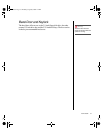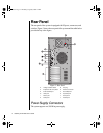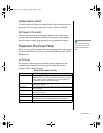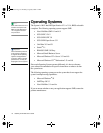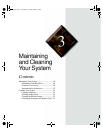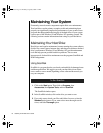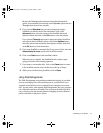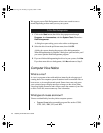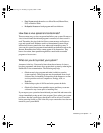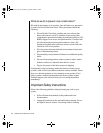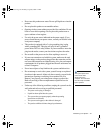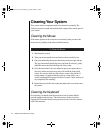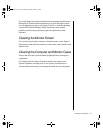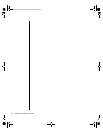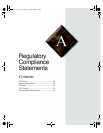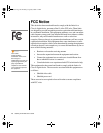
Maintaining Your System 21
• Boot Viruses attach themselves to a Boot Record, Master Boot,
FAT, or Partition Table.
• Multipartite Viruses are both program and boot infectors.
How does a virus spread and contaminate?
There are many ways a virus can spread and infect your system. However, a
virus is inactive until the infected program is executed, or a boot record is
read. Thereafter, the virus loads itself into system memory and begins to
copy and spread itself. Diskettes used in a contaminated system can get
infected and, in turn, transfer the virus when used in another system. A
virus can also spread via programs downloaded from bulletin boards or the
Internet. Remember that viruses cannot appear all by themselves. They
have to be written, then spread through direct contact with executable
programs or boot sectors.
What can you do to protect your system?
Awareness is the key. Users need to learn about the existence of viruses,
how they perpetuate, and what to do to protect their systems by reducing the
likelihood of virus contamination. The following may help:
• Obtain an anti-virus program and make it a habit to scan the
system regularly. These programs may be purchased from a local
software store or obtained via shareware on the Internet or on-line
service providers such as CompuServe, Prodigy, AOL, or
DeltaNet.
• Make backup copies of all files and write-protect the disks.
• Obtain all software from reputable sources and always scan new
software for any viruses prior to installing files.
If you suspect your system has been infected, you must find and remove the
viruses immediately using an anti-virus program. Next, reboot your system
as follows: shut the system down, then power it off for at least 15 seconds
before powering it back on. This is the only way to ensure the virus does not
remain in your system RAM.
3435.boo Page 21 Thursday, August 6, 1998 7:12 AM



